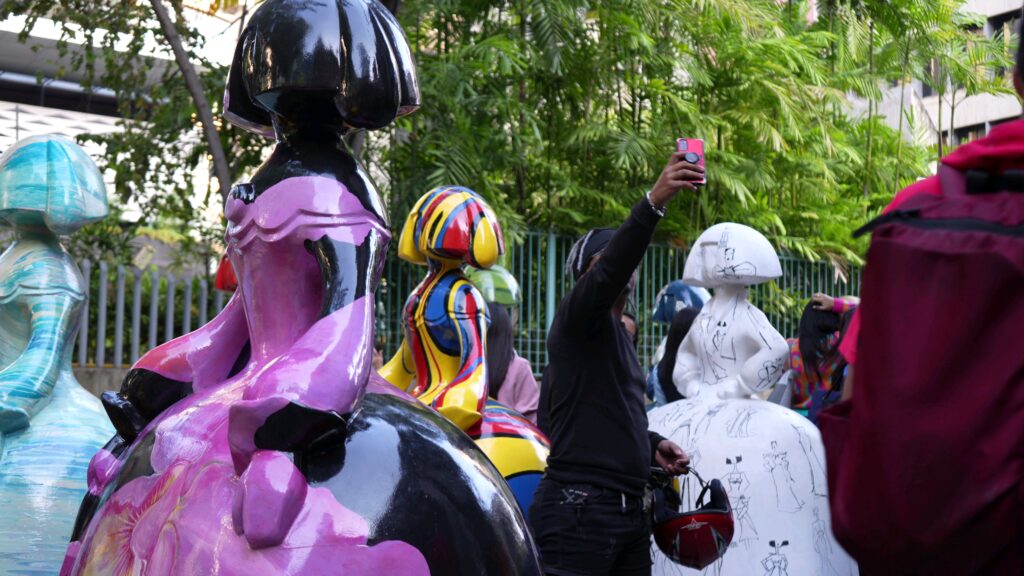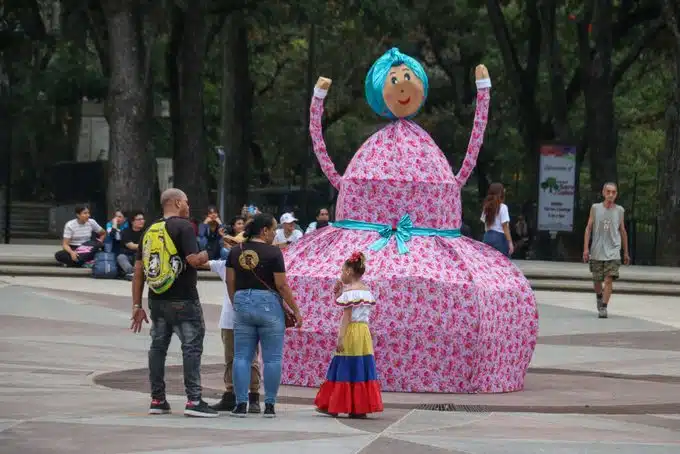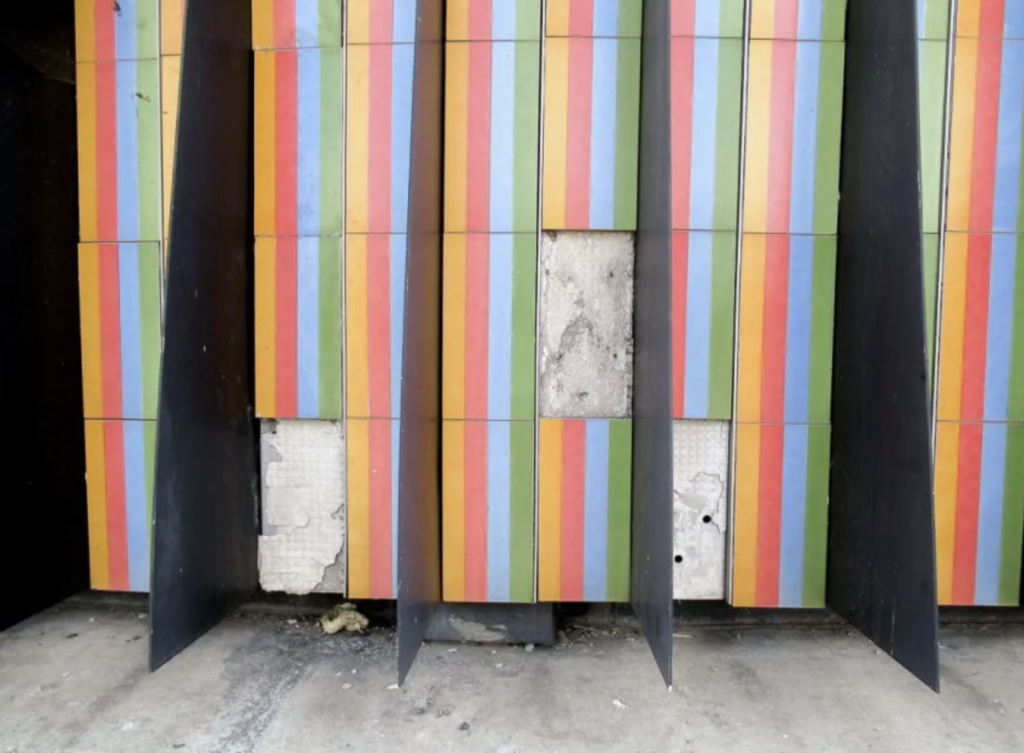Cartoon-Washing: The Caracas Mayors’ New Sculptures
While valuable public art is falling apart, Caracas mayors install cartoon sculptures to image-wash their governments.


In the blink of an eye, all sorts of cartoon characters and nationalistic princesses have popped up throughout the wealthy municipalities of eastern Caracas. Snoopy, Mafalda, The Little Prince and the Meninas have arrived in a matter of six months, creating a strange pattern of public sculptures that have transformed half the city into a sort of postmodern theme park.

It all started last June, when a sculpture of Argentinian comic strip characters Mafalda and Manolito was placed in Baruta’s Plaza Oberón. Then, Snoopy took over a bench in a Cumbres de Curumo park. In January, nineteen Meninas by the Venezuelan artist Antonio Azzato were temporarily placed throughout Chacao municipality as part of an open air gallery (they have been already removed as some of them will be sold in a charity auction), and finally, a week ago, a statue of The Little Prince was inaugurated in the Parque Vizcaya of Baruta.
For weeks, hundreds of Caraqueños took selfies with the Meninas and even queued in public squares to take pictures. Of course, the Meninas’ effect of cheering up some people and encouraging them to approach art is never unwelcomed. But their role must not be exaggerated: in an Instagram post, Baruta mayor Darwin González claimed to be “making city” while his fellow mayor of Chacao municipality, Gustavo Duque, said that the Meninas gallery was “the most important cultural event of Venezuela in recent years”.
Of course, this is all happening amidst the promotion of the “Venezuela’s fixed” narrative –a sort of national re-branding promoted by some political and economic elites capitalized on the generalized sensation of a now-collapsing relative peace. The Meninas and the cartoon characters have fallen like hand in glove for the well-done propaganda of the Madurista system: “Venezuela is doing great! Even if none of the systematic problems of the country have been solved, even if the dictatorship and the poverty go on, our Meninas and Snoopies are making city!”
In fact, the sculpturemania seems to be a sort of image-washing strategy from these controversial mayors to attain a sort of legitimacy in the eyes of an oppositional middle class constituency that is critical of its shady ties with emerging economic elites –giant stores, paddle tennis courts, expensive waste recollection systems and new shiny towers– and its widespread felling of urban trees.
This is not surprising, as both Duque and González are members of Fuerza Vecinal, a political party that has stayed away from the Unitary Platform and has maintained a sort of amicable relation with both the regime and its rising business elite. The Fuerza Vecinal mayors are building their management styles on spectacularism and personalism, just as Chavismo does –in a much less enormous form, I have to say– but with a nouveau riche aesthetic that pretends to be apolitical when, in some way, every urban aesthetic is a political aesthetic.
For example, the inauguration of The Little Prince statue opened a wide discussion about political personalism because the name of González is engraved on the statue’s base with an obscene proportion. He also put his name on the Mafalda and Snoopy plaques.
Of course, these vane exhibitions for an easy applause –which do not, as González says, “makes a city”– are both turning the city’s back on its long tradition of high-quality public art and lowering the standards of public administration the city needs and wants. Making a city goes beyond placing iconic characters statues for the people to take selfies. Making a city is not decorating it with the superficial and trivial social media logic for the society of the spectacle. Making a city, I would say, means solving the structural problems of urban space.
I’m afraid that those public art proposals are answering to the like button of social media and its algorithms. I’m also afraid that the Meninas are, as Duque said, our most important cultural event in the country: because it says a lot about our poor and deteriorated public cultural circuit. Chávez’s cultural revolution, which destroyed the autonomy and management of public museums in 2001, has marked us till this day.
And the west of the city is not exempt. Besides its deployment of “decolonial” art –or giant golden sculptures of caciques and murals with Indigenous symbols taken out of context– the Chavista mayor has decorated the city for carnival with gigantic mushrooms, macaws and paperboard meninas inspired in the madamas of El Callao – a sort of folkloric response to the success of Chacao’s Meninas. And yet, both the meninas designed by a Madrid-based artist and the folkloric El Callao meninas are antipodes that meet in the same circumstance of mediocre pastiche.

In January, P&G also closed down its last assembly line in Venezuela as our ravaged economy is being more and more outsourced. Seemingly, our culture is becoming outsourced too, following the destruction of the public art circuit and the breakdown of bridges between the state and the private art circuit. Unlike the Cruz-Diez, Gego and Soto artworks of the past, we are no longer allowing public space to be used by rising national artists like Elías Crespín: we have an identity crisis and a crisis of national references too. This void, filled with foreign cartoon characters, is the effect of the irruption of a cultural hegemony that swept away the previous establishment.
Meanwhile, the void is being used to promote a fantastic positivity speech in which mayors and the president are trying to turn the city into a Disneyland where no roller coaster works. But for the mobs of social media, criticism –or someone demanding a real and significant cultural experience accompanied with a functional city– means, for some reason, that he or she doesn’t want the others to be happy.

It would have been a great opportunity to approach the urban gallery concept with something more unique or with more artists besides a single one; something that would not have been a copy of a Madrid trend, something that isn’t just transitory, something that narrates an intelligent artistic discourse to ponderate and inspire contemplation, something that channels our crisis, something that dialogue with it and with the public that lives it, instead of being meek – as some proposed on social media. But I don’t think those docile mayors would take that risk.Meanwhile, Cruz-Diez’s Fisicromía in Plaza Venezuela keeps falling to pieces. And I keep asking myself: how can we settle, how can we simply cheer the cartoon characters, when the ruins of what we once were, of a heritage that we must recover, are still present?
Caracas Chronicles is 100% reader-supported.
We’ve been able to hang on for 22 years in one of the craziest media landscapes in the world. We’ve seen different media outlets in Venezuela (and abroad) closing shop, something we’re looking to avoid at all costs. Your collaboration goes a long way in helping us weather the storm.
Donate




